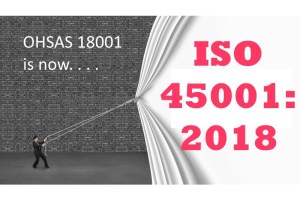
What are the difference between ISO 14001:2004 and ISO 14001:2015?
Organizational Context
Organizations are now required to systematically take into
account the organizational context. Organizational context can be looked
at as the environment in which your business operates. Now you will need
to consider which internal and external factors can influence the environmental
goals of your organization.
This will allow organizations to have a better understanding of
the risks and opportunities it will encounter and to be better prepared to
minimize (risks) and maximize (opportunities) in order to favour the
organization’s environmental performance.
Needs and Expectations of Interested Parties
Organizations are now required to take a careful look at the
needs and expectations of interested parties (stakeholders). They will need to
identify relevant stakeholders and understand how these can impact the EMS if
their needs and expectations are not met.
Leadership and Commitment
Top management is now required to demonstrate commitment and
leadership to the EMS. In the new standard, there is no such a thing as a
management representative, now everyone is required to commit in a number of
specified ways.
In ISO 14001:2004, organizations were required to commit, among
other things, to reducing negative environmental impacts. Now, the new standard
goes further by requiring organizations to also aim at having a positive impact
and improve environmental conditions.
Life Cycle Perspective
The term life cycle has been included many times more in the new
standard than in the 2004 revision. While in the last version, organizations
were not required to consider the life cycle of products or services for the
identification of environmental impacts, the new one does.
Organizations are now required to take a life cycle perspective
when identifying and evaluating environmental aspects. For example,
procurement, designed, transportation and disposal activities will now need to
be considered. The purpose of this life cycle perspective is to contribute to
sustainable development and prevent negative environmental impacts from
shifting through the life cycle of a product or service.
Environmental Performance
The standard is now more specific regarding the evaluation of
environmental performance. Organizations are required to use quantitative data
in the evaluation process.
Communications
According to this new version, organizations are required to
communicate externally relevant information regarding the EMS. This should be
done following a communication process that the organization must establish.
In general, this new standard emphasizes environmental
performance improvement and drives organizations to focus on organizational
context and relevant stakeholders. It also promotes risk-based thinking and a
life cycle perspective.





